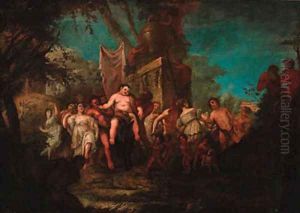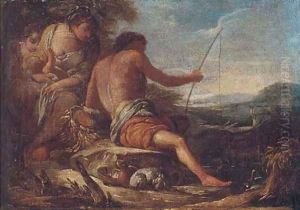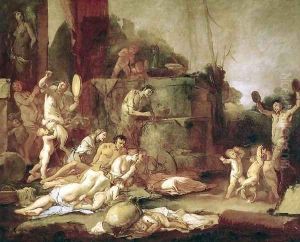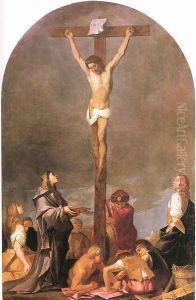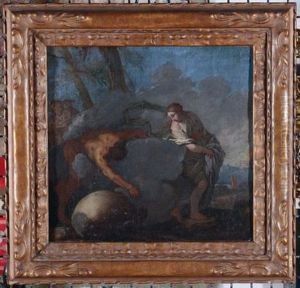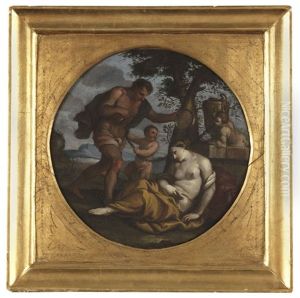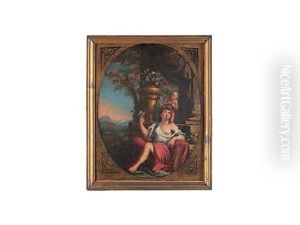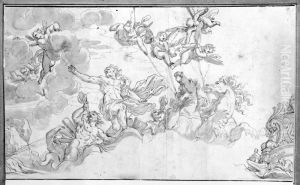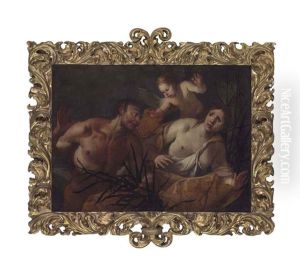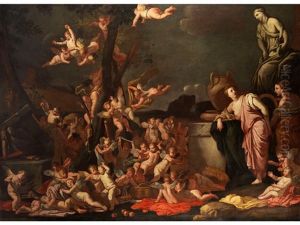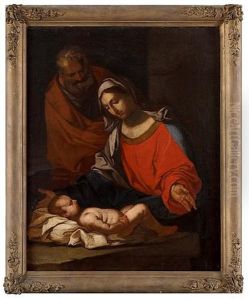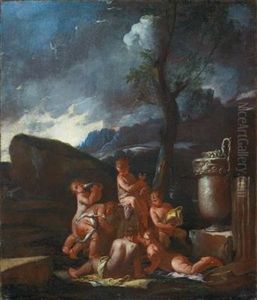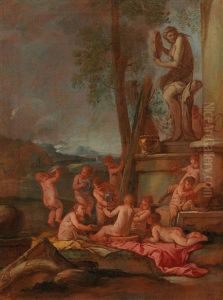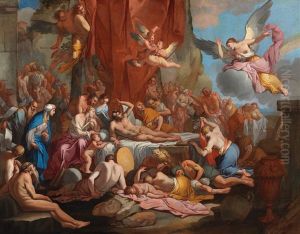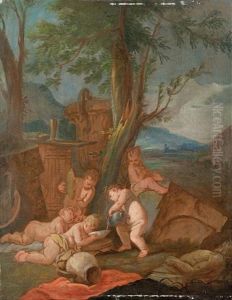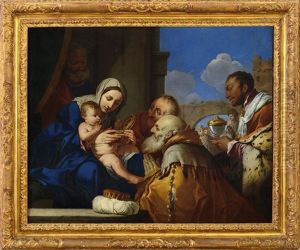Giulio Carpioni Paintings
Giulio Carpioni was an Italian painter and etcher of the early Baroque period, born in Venice in 1613. He is considered one of the most important artists of the Venetian school in the 17th century, although his work also shows the influence of the Bolognese School and the style of Paolo Veronese. Carpioni received his initial training in Venice, possibly under the guidance of Padovanino (Alessandro Varotari) but was also significantly influenced by the dynamic works of the Genoese artist Giovanni Benedetto Castiglione. Carpioni's oeuvre includes mythological and religious subjects, landscapes, and genre scenes, characterized by vibrant colors, dynamic compositions, and a delicate handling of light. His mythological paintings, in particular, are noted for their imaginative and often pastoral themes, reflecting the influence of the pastoral poetry popular in his time. Carpioni was also an accomplished etcher, producing works that are remarkable for their technical proficiency and expressive quality. Throughout his career, Carpioni worked in various Italian cities, including Vicenza, where he contributed significantly to the decoration of the Villa Valmarana. His work in Vicenza represents some of his finest achievements, with frescoes that exhibit his mastery of allegorical and mythological subjects. Carpioni's influence extended beyond his immediate circle, impacting the development of Venetian painting and contributing to the transition from the Renaissance to the Baroque style. Giulio Carpioni died in Venice in 1674, leaving behind a legacy that was appreciated by his contemporaries and continued to be celebrated by art historians and collectors. His contributions to Italian art, particularly in the realm of painting and etching, have ensured his place among the notable artists of the Baroque period.



